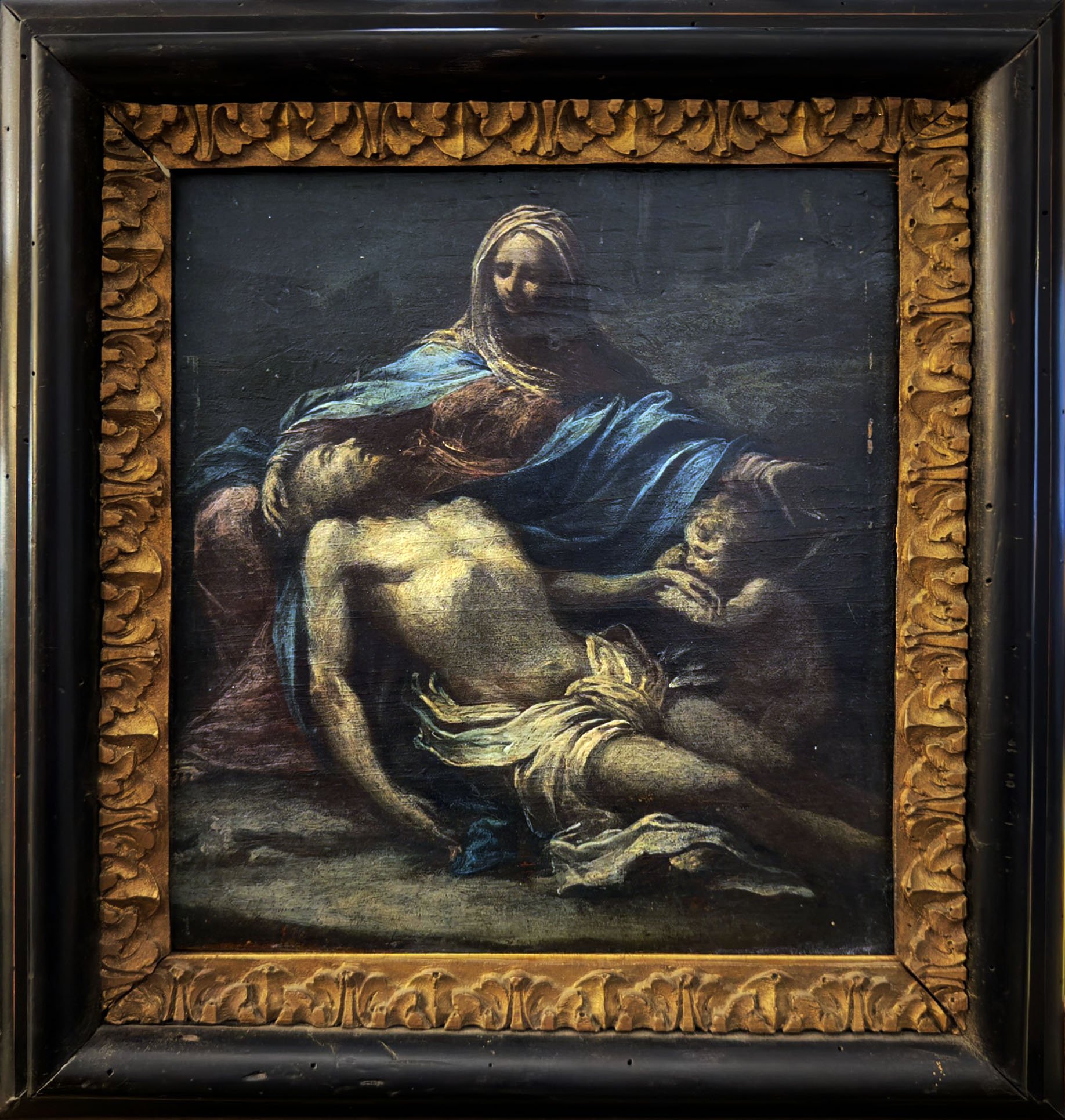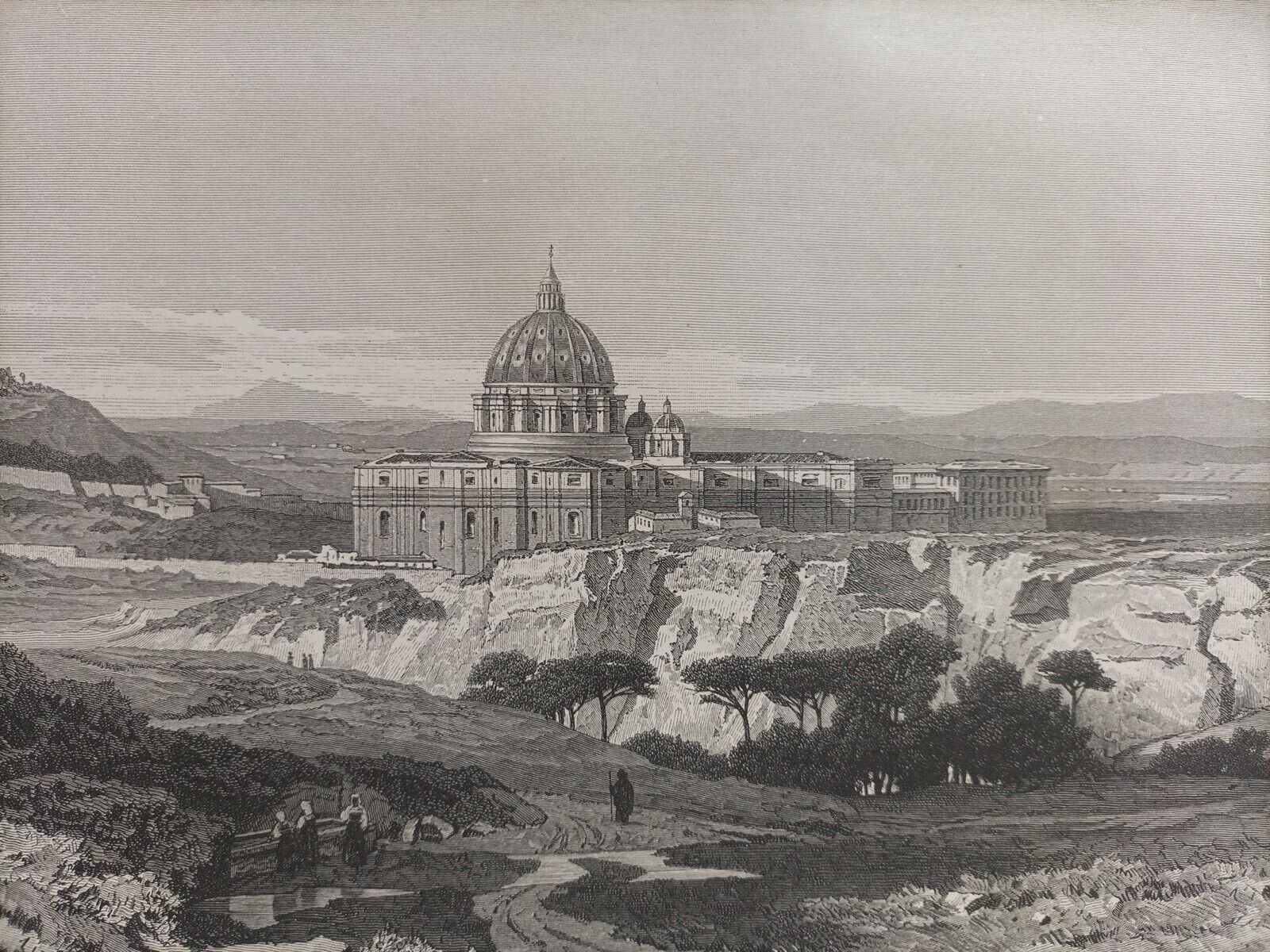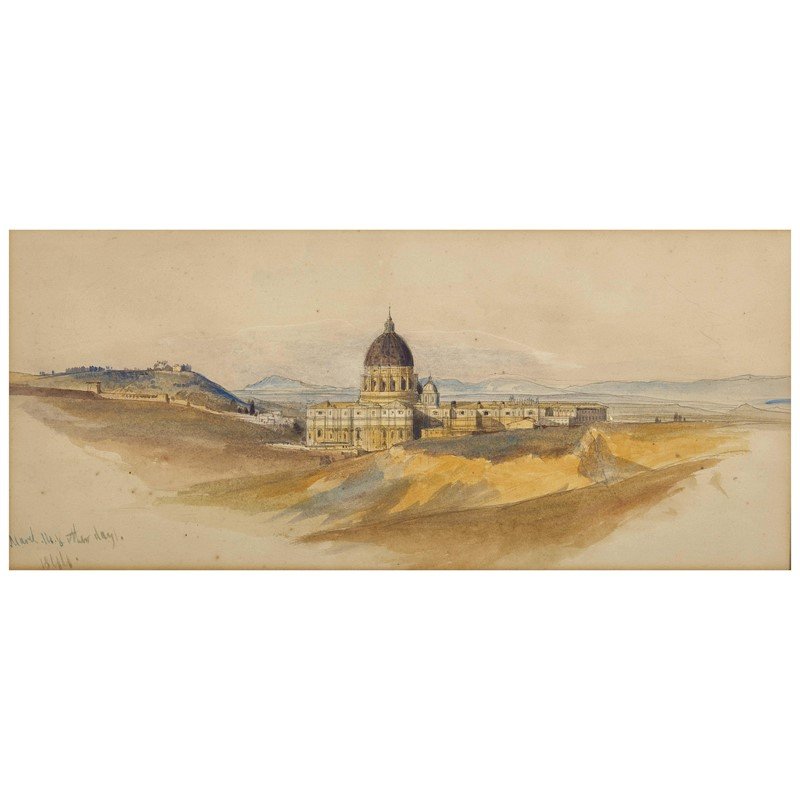"Ariadne abandoned by Theseus"
A mithological subject is an unusual theme for this talented artist, whose work traditionally has been handed down only through gouaches with Roman motives created for travellers on the so-called Grand Tour of Italy in the 19th century. Yet numerous details and technical parallels point to his hand. The typical beaded edge around the central image sections, a special color scheme, and the incomparably fanciful variety of the Neo-Pompeian decorations indicate Tommaso Bigatti’s hand. Both the selection of particular fine parchment and the excellent gouache painting can be found in all the artist’s known works as well. The central motif in the oval shows Ariadne on the beach of the island Naxos, from which her unfaithful lover Theseus has just departed; she pines over the disappearance of his boat into the distance. On both sides grotesque decorations, frame this picture, and lead the viewer’s eye to the central image
A fan project page, Gouache over pencil, heightened with gum arabic on vellum.
Attributed to Tommaso Bigatti active in Rome circa 1800s.
Within an antique giltwood frame.
Very good condition commensurate with age.
With the advent of the Restoration, which marked the end of a very stormy period for Europe, Italy once again became the preferred destination for foreign travelers. And Rome remained an absolutely essential stop on the Grand Tour itineraries. From here, amateurs and collectors rarely left empty-handed. Too strong was the desire to transfer to the country of origin a testimony of what for many was to remain an unrepeatable experience. Thus a particular artistic sector developed almost exclusively dedicated to satisfying these needs. One of the most popular artists active in this type of production was certainly Tommaso Bigatti, whose works express an unmistakable stylistic figure: never too large in size even to facilitate transport, often framed under glass to preserve the integrity of the precious tempera technique. on parchment, Bigatti's sheets mainly offered images taken from Pompeian paintings, frescoes or ancient paintings, or views of Rome, surrounded by a triumph of grotesques and friezes inserted in elegant architectural scores.










